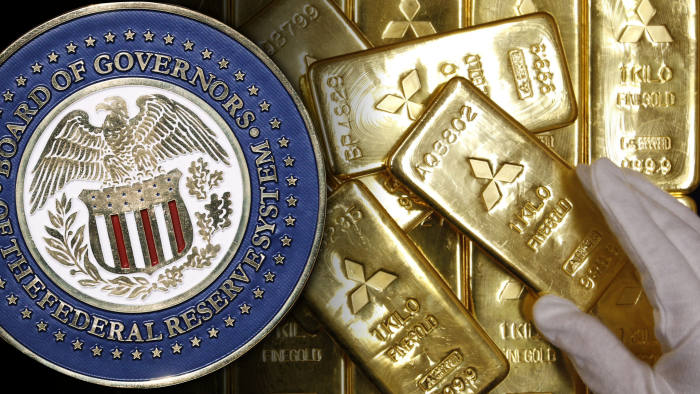Gold has been trading in a narrow range so far this year due to the lack of clarity on the timing of the US Federal Reserve’s monetary policy easing cycle. Higher borrowing costs are generally negative for gold.
After a year in which the strength of the US dollar and the central bank’s tightening policy weighed on the gold market, we believe that Fed policy will continue to play a key role in the outlook for prices in the coming months.
Geopolitical Tensions Support Gold Prices
Gold prices held above $2,000 as the precious metal was supported by safe-haven demand amid geopolitical tensions. Ongoing geopolitical risk in Ukraine and the Middle East continues to provide support for gold. Prices reached an all-time high of $2,077.49 on December 27, 2023. Still, we believe the Fed’s “wait and see” approach will keep the rally in check. We expect prices to average $2,025 in the first quarter.
Geopolitical Risk Index
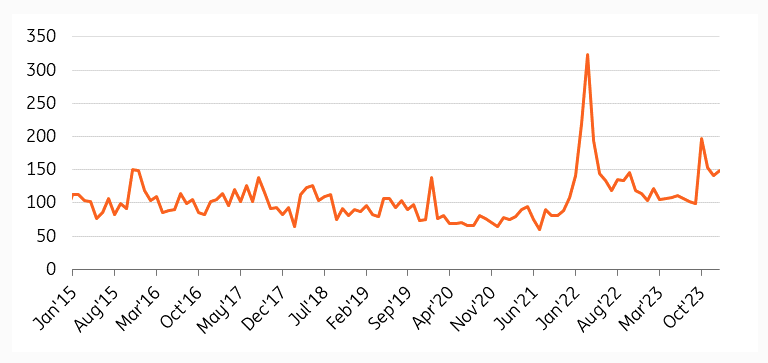
Fed Policy Remains Key
We believe that Fed policy will continue to play a key role in the outlook for gold prices in the coming months. US dollar strength and central bank tightening suppressed the gold market for most of 2023.
Strong GDP and employment growth show that the US economy continues to shrug off high borrowing costs and tight credit conditions, largely through strong government spending and consumers depleting their savings. These factors will be less supportive in 2024 and inflation is heading towards 2%. The Fed therefore has room to cut interest rates sharply. Our US economist still expects the Fed to start cutting rates in May.
We expect gold prices to fluctuate in the coming months as the market reacts to macro factors, geopolitical events and the Fed’s interest rate policy.
Central Bank Purchases Continue
Meanwhile, central bank demand maintained its momentum in the fourth quarter, adding 229 tons to global official gold reserves, according to data from the World Gold Council. Annual net demand rose to 1,037 tonnes, just short of the record of 1,082 tonnes set in 2022, as geopolitical concerns prompted central banks to increase their exposure to safe assets. Central banks’ healthy appetite for gold is also driven by concerns over Russian-style sanctions on foreign assets following the US and Europe’s decision to freeze Russian assets and change their strategy on foreign exchange reserves.
The People’s Bank of China was the largest single gold buyer, with a total increase in its gold reserves of 225 tons during the year. The Central Bank of Poland was the second largest buyer in 2023. The central bank bought 130 tons of gold between April and November, increasing its gold holdings by 57% to 359 tons.
Gold tends to become more attractive in times of instability and demand has been rising for the last two years. This trend shows no sign of abating. We believe this will continue this year due to geopolitical tensions and the current economic environment.
Central Banks’ Purchases for 2023 (Tons)
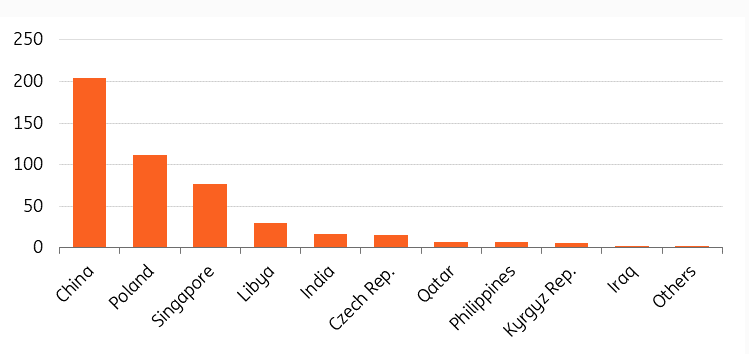
Central Banks Demand (Tons)
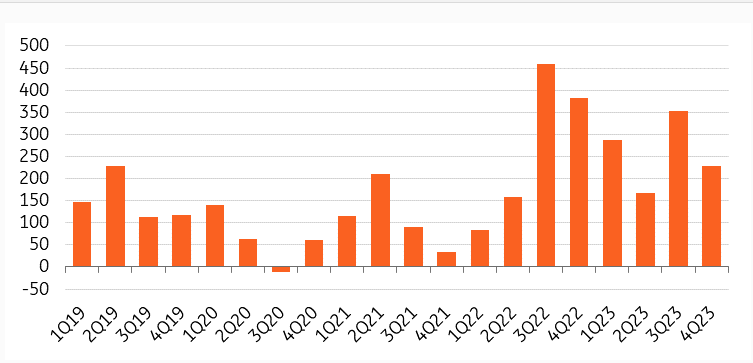
2024 Begins with Continuation of ETF Exits
Still, total assets in gold bullion-backed ETFs continued to decline. Global gold ETFs saw eight monthly outflows in January, led by North American funds. According to data from the World Gold Council, this corresponds to a 51-ton decrease in global assets to 3,175 tons by the end of January. Investor interest in gold ETFs waned as bets on early interest rate cuts by major central banks retreated.
However, looking to the future, we think that investors’ interest in the precious metal will revive and net inflows will resume as gold prices rise with the fall in interest rates in the US.
Monthly ETF Changes (Tons)
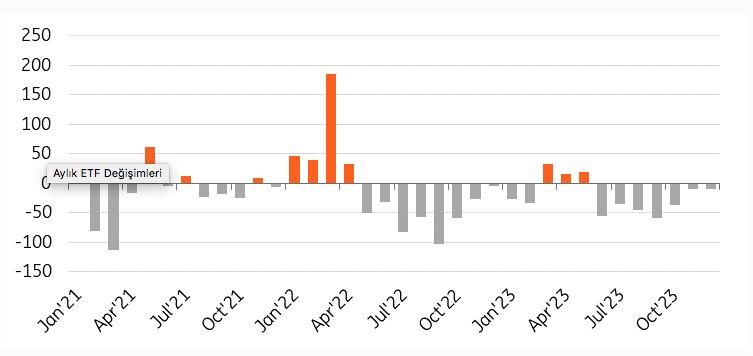
Reflecting sentiment in the gold market, the CFTC’s latest positioning data showed that managed money’s net long positions in COMEX gold increased by 10,615 lots after a four-week decline to 82,591 lots as of February 6, 2024. The increase was driven by a 6,376-lot decline in gross short positions.
CFTC Gold Speculative Net Positions (‘000 Lots)
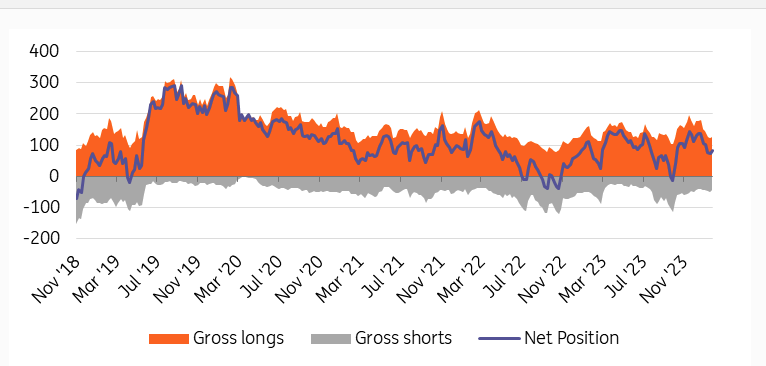
Gold to Reach New Highs in 2024
We expect gold prices to reach new highs this year. Based on the assumptions of a Fed rate cut in the second quarter, a weaker dollar and continued safe-haven demand amid global economic uncertainty, we expect gold to average $2,150 in the fourth quarter and $2,081 in 2024. Downside risks revolve around US monetary policy and dollar strength. Higher interest rate rhetoric for longer could lead to a stronger dollar and weaker gold prices for longer.
Estimated
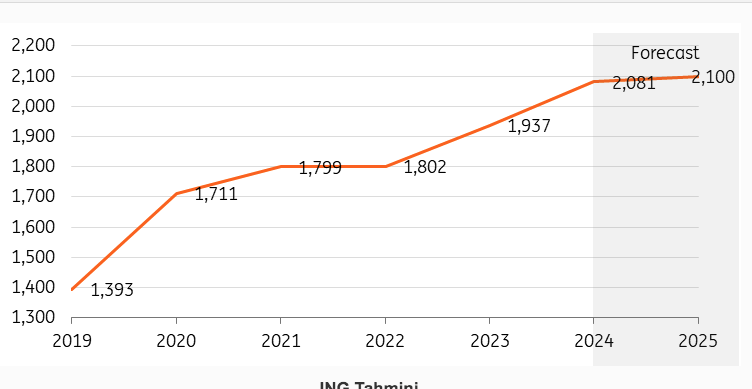
Warning: This publication has been prepared by fikrikadim/ancient idea for informational purposes only, without regard to the means, financial situation or investment objectives of any particular user. This information does not constitute investment advice, nor is it investment, legal or tax advice, nor is it an offer or solicitation to buy or sell any financial instrument

